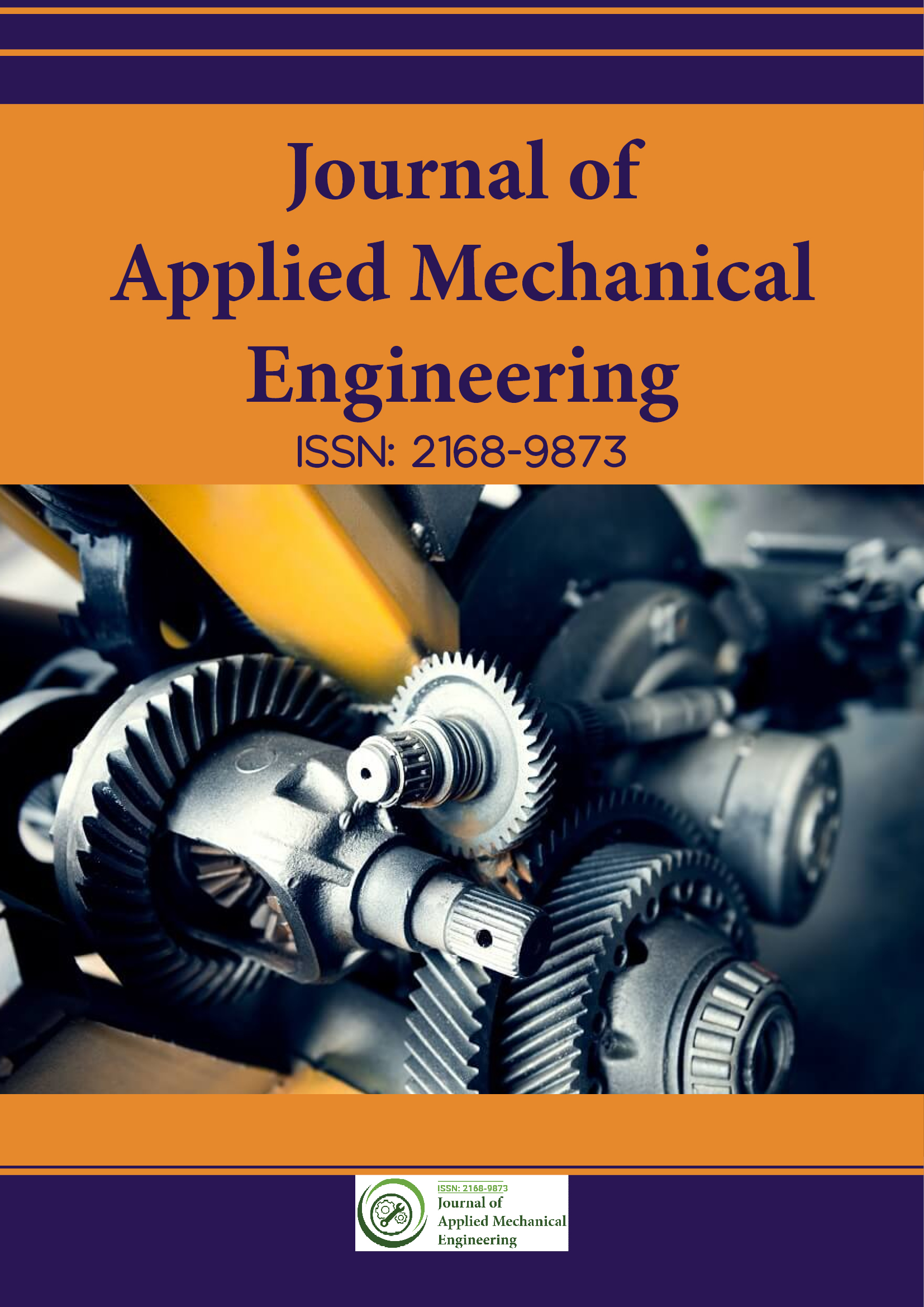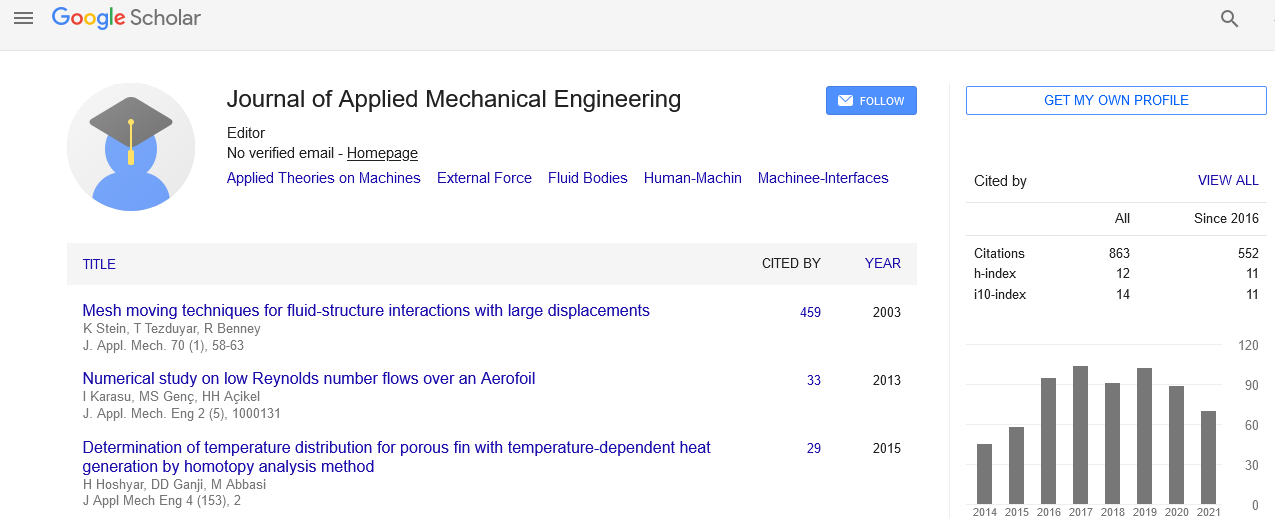Indexed In
- Genamics JournalSeek
- JournalTOCs
- CiteFactor
- RefSeek
- Hamdard University
- EBSCO A-Z
- OCLC- WorldCat
- Publons
- Google Scholar
Useful Links
Share This Page
Journal Flyer

Open Access Journals
- Agri and Aquaculture
- Biochemistry
- Bioinformatics & Systems Biology
- Business & Management
- Chemistry
- Clinical Sciences
- Engineering
- Food & Nutrition
- General Science
- Genetics & Molecular Biology
- Immunology & Microbiology
- Medical Sciences
- Neuroscience & Psychology
- Nursing & Health Care
- Pharmaceutical Sciences
Perspective - (2025) Volume 14, Issue 1
Turbomachinery in Mechanical Engineering: Unleashing the Power of Fluid Dynamics
Koen Mostard*Received: 14-Nov-2023, Manuscript No. JAME-23-23911; Editor assigned: 17-Nov-2023, Pre QC No. JAME-23-23911 (PQ); Reviewed: 01-Dec-2023, QC No. JAME-23-23911; Revised: 09-Jan-2025, Manuscript No. JAME-23-23911 (R); Published: 16-Jan-2025, DOI: 10.35248/2168-9873.25.14.529
Description
Turbo machinery, a vital subset of mechanical engineering, revolves around the study and application of devices that transfer energy between a rotor and a fluid. This broad category encompasses various types of machines, including turbines and compressors, which play pivotal roles in power generation, aviation, and industrial processes. This article delves into the principles, applications, and significance of turbo machinery in the field of mechanical engineering. Turbo machinery is founded on the principles of fluid dynamics, focusing on the interaction between a rotating component (the rotor) and a fluid, be it a gas or a liquid. The two primary types of turbo machinery are turbines and compressors, each designed for specific functions. Turbines convert fluid energy into mechanical energy, typically producing shaft work to generate electricity or propel vehicles. In contrast, compressors do the opposite by adding energy to the fluid, increasing its pressure and density.
Turbines harness the kinetic energy of a moving fluid to generate mechanical power. The basic operation involves the expansion of a high-velocity fluid through the rotor, causing it to spin. The rotor is connected to a shaft, and the resulting rotation can be harnessed for various applications, such as generating electricity in power plants or providing thrust in jet engines. Compressors, on the other hand, are designed to increase the pressure of a fluid by imparting energy to it. This is achieved by accelerating the fluid through the rotor, thereby compressing it. Compressors are essential in applications such as air conditioning, refrigeration and the compression stages of gas turbine engines.
Turbo machinery is a cornerstone of power generation, playing a central role in converting various forms of energy into electricity. Gas turbines, steam turbines, and hydraulic turbines are integral components of power plants, ensuring efficient and reliable electricity production. Turbo machinery is at the heart of aviation propulsion systems. Jet engines, employing gas turbines, utilize the principles of compressing and expanding air to generate thrust. The efficiency and power density of turbo machinery make it indispensable for modern aircraft, ranging from commercial airliners to military jets. The oil and gas industry extensively employs turbo machinery for compression, pumping and power generation. Centrifugal and axial compressors are crucial in natural gas processing and transportation, while gas turbines drive many of the industry's power generation units. In the realm of renewable energy, turbo machinery finds applications in hydropower generation. Hydraulic turbines harness the energy of flowing water to produce clean and sustainable electricity, contributing to the global shift towards renewable energy sources. Turbo machinery is integral to various industrial processes, including chemical manufacturing and refining. Compressors are used for the pressurization and transportation of gases, while turbines drive mechanical equipment in diverse industrial applications.
Enhancing the efficiency of turbo machinery remains a constant challenge. Engineers are actively exploring innovative designs and materials to improve efficiency, reduce energy consumption, and minimize the environmental impact of these machines. The demand for increased operational flexibility poses challenges for turbo machinery. Innovations in control systems and materials are essential to ensure that these machines can efficiently adapt to varying operating conditions and demands. The harsh operating conditions of turbo machinery, including high temperatures and pressures, require advanced materials and coatings. Ongoing research focuses on developing materials that can withstand extreme conditions while maintaining reliability and efficiency. In certain applications, such as Unmanned Aerial Vehicles (UAVs) and micro turbines, there is a growing demand for miniaturized and integrated turbo machinery systems. Achieving compact designs without compromising performance is a key area of innovation. The integration of digital twin technology is transforming the way turbo machinery is designed, monitored and maintained. Digital twins, virtual replicas of physical machines, enable real-time monitoring, diagnostics and optimization, leading to improved performance and reliability. Additive manufacturing, or 3D printing, is increasingly being explored for producing turbo machinery components. This technology offers the potential for intricate designs, reduced manufacturing lead times and improved efficiency through optimized geometries.
Conclusion
Turbo machinery stands as a testament to the ingenuity and engineering prowess that propels modern society forward. From powering cities through electricity generation to propelling aircraft through the skies, turbo machinery plays an integral role in a multitude of applications. As technology continues to advance, the challenges of improving efficiency, minimizing environmental impact and adapting to evolving demands will drive ongoing innovations in turbo machinery design and operation. The future promises a continued fusion of cuttingedge technologies, materials and digital solutions, ensuring that turbo machinery remains at the forefront of mechanical engineering, shaping the way we harness and utilize energy for generations to come.
Citation: Mostard K (2025) Turbomachinery in Mechanical Engineering: Unleashing the Power of Fluid Dynamics. J Appl Mech Eng. 14:529.
Copyright: © 2025 Mostard K. This is an open-access article distributed under the terms of the Creative Commons Attribution License, which permits unrestricted use, distribution, and reproduction in any medium, provided the original author and source are credited.

